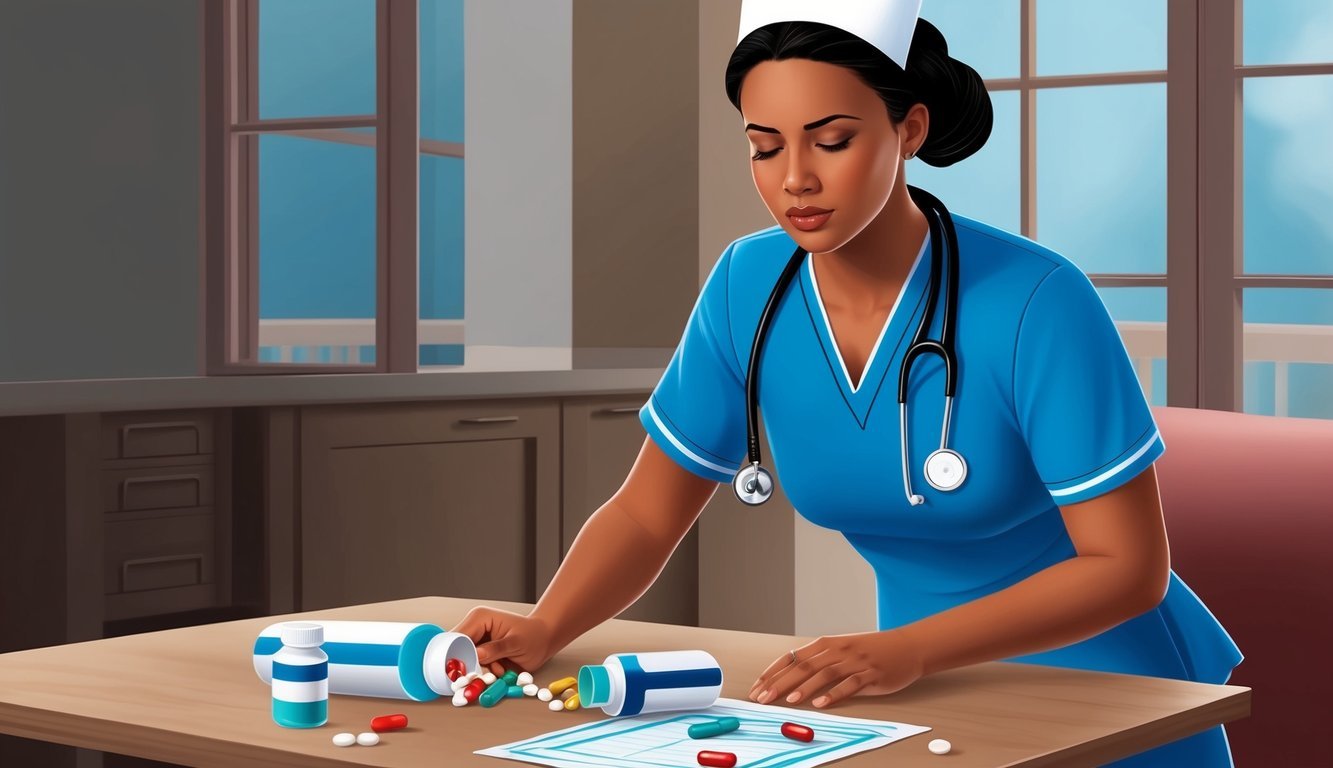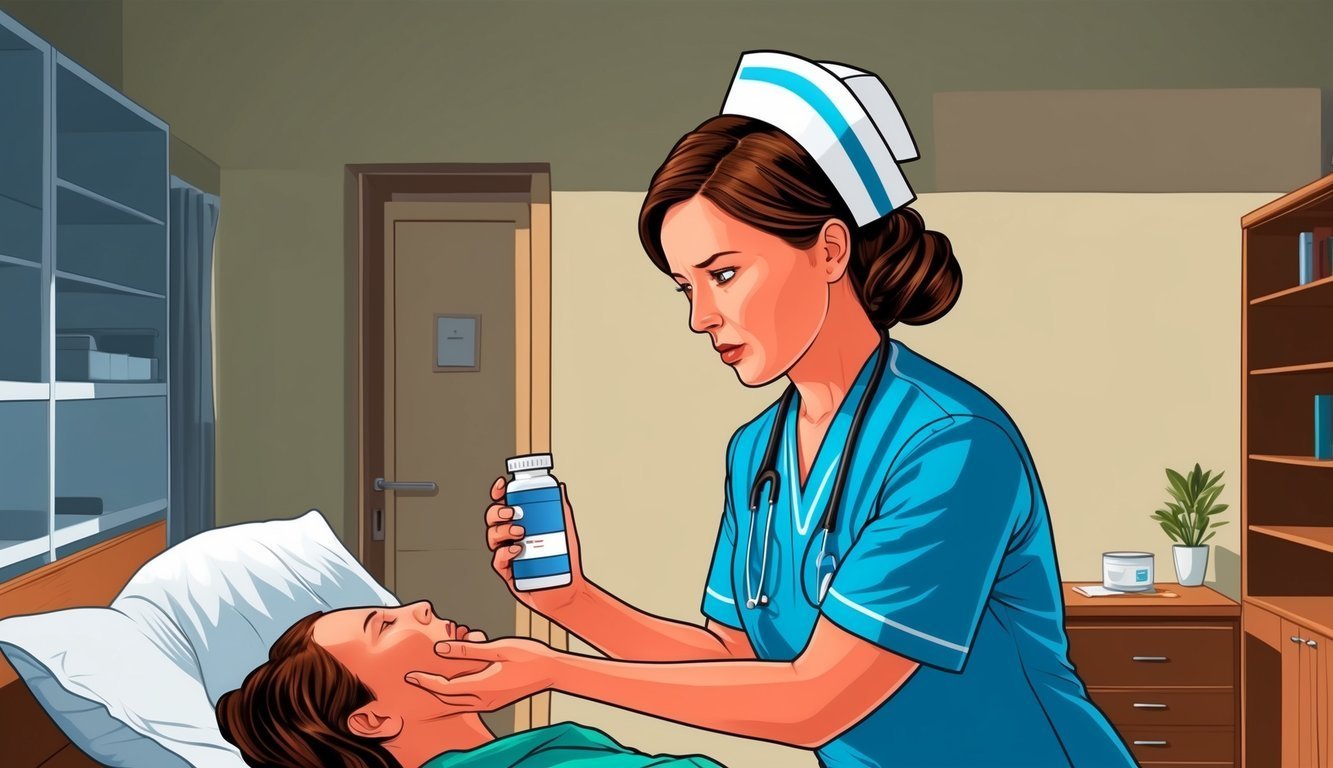Negligence in nursing is a serious issue that can have severe consequences for patients. You can identify many examples of nursing negligence, such as medication errors, failure to monitor patients, and improper documentation. Understanding these examples is crucial for both healthcare professionals and patients to ensure safety and quality care in medical settings.
When nurses fail to meet their professional obligations, it can lead to harm or even life-threatening situations for patients.
This blog post will explore common examples of negligence in nursing, the importance of adhering to standards of care, and strategies to prevent potential mistakes.
By learning more about these aspects, you can understand how to advocate for better nursing practices and care.
In an environment where patient safety is paramount, knowledge about negligence can empower both nurses and patients.
Stay informed about the standards of care and the responsibilities that nurses hold to protect themselves and those in their care.
Key Takeaways
- Understanding what constitutes nursing negligence helps ensure patient safety.
- Identifying key responsibilities can prevent errors in patient care.
- Ongoing training and awareness are essential for competent nursing practice.
The Fundamentals of Nursing Care

In nursing, understanding the core principles of care is vital for ensuring patient safety and avoiding negligence.
This section outlines the standard of care nurses must follow and highlights the concepts of duty and breach of duty in nursing practice.
Understanding Standard of Care
The standard of care refers to the level of care that a reasonable nurse would provide in similar circumstances.
It is based on established guidelines outlined in the nurse practice act and professional standards.
These guidelines help you determine the necessary actions when caring for patients.
Factors influencing the standard of care include:
- Specialty: Different nursing areas have unique standards.
- Patient’s Condition: More acute conditions may require higher levels of care.
- Institution Policies: Hospitals and clinics may have specific protocols.
Falling short of this standard can lead to patient harm and potential legal issues.
Duty and Breach of Duty in Nursing
As a nurse, you have a duty of care to your patients.
This means you are responsible for providing safe and competent care.
A breach of duty occurs when you fail to meet the standard of care expected in your role.
Examples include:
- Failure to Monitor: Not keeping track of vital signs or changes in a patient’s condition.
- Improper Documentation: Missing or inaccurate records can lead to unsafe care decisions.
- Neglecting Communication: Not sharing critical information with the healthcare team can harm patients.
When a breach occurs, you may be held liable for any resulting damages.
Understanding these responsibilities helps protect both you and your patients.
Identifying Examples of Nursing Negligence
Recognizing nursing negligence is vital for ensuring patient safety.
This section focuses on specific examples such as medication errors, failures in documentation, and inadequate patient monitoring.
Medication Errors and Patient Harm
Medication errors are one of the most common forms of negligence in nursing.
These can include administering the wrong dosage, failing to give medications on time, or giving the wrong medication altogether.
For instance, if a nurse gives a patient a double dose of a medication, it can lead to severe side effects or even hospitalization.
Accurate medication administration is crucial.
Adverse events related to medication errors account for significant patient harm.
To minimize these errors, nurses must follow strict protocols.
This includes double-checking medications and understanding the implications of each drug’s side effects.
Documentation Failures and Nursing Malpractice
Proper documentation is essential in nursing practice.
Failing to accurately record patient information can lead to serious consequences.
For instance, if a nurse does not document a change in a patient’s condition, it may result in delayed treatment.
Nursing negligence can arise when records are incomplete, incorrectly filled, or missing.
This can lead to misunderstandings among healthcare providers and unsafe patient care.
To avoid malpractice, always maintain clear and detailed documentation.
Using standardized forms and electronic health records can help ensure that all necessary information is captured.
Inadequate Patient Monitoring in Adverse Events
Patient monitoring is critical, especially during adverse events, such as post-operative recovery or sudden changes in patient conditions.
If a nurse fails to monitor vital signs adequately, it could lead to undetected complications.
For example, a drop in blood pressure or oxygen levels should trigger immediate medical attention.
Insufficient monitoring can escalate into life-threatening scenarios.
Patients often rely on nurses to observe and report these crucial changes.
Implementing regular checks and using monitoring technology can help reduce the risk of negligence in this area.
Always prioritize patient safety by being vigilant in monitoring and responding promptly to any signs of distress.
Legal Implications and Nurse Responsibilities
Understanding the legal implications of nursing practices is crucial.
You must be aware of your responsibilities to avoid malpractice claims.
This section addresses important aspects such as malpractice insurance and the role of nursing supervisors in legal cases.
Malpractice Insurance and Legal Protection
Malpractice insurance is vital for you as a nurse.
It protects you from financial harm in case of a lawsuit.
This type of insurance covers legal fees and any settlements awarded to the injured party.
Key Benefits of Malpractice Insurance:
- Financial Protection: Covers costs related to lawsuits.
- Legal Support: Provides access to legal professionals who understand nursing laws.
- Peace of Mind: Reduces stress about potential legal issues.
Without malpractice insurance, you risk paying substantial amounts out of pocket if found liable for negligence.
You need to choose a policy that meets your professional needs while complying with state regulations.
Role of Nursing Supervisor in Legal Proceedings
Nursing supervisors play a key role in legal matters involving their staff.
They ensure all actions meet professional standards and legal requirements.
If a malpractice lawsuit arises, your supervisor may be called to testify.
Important Responsibilities Include:
- Training and Education: Ensuring nurses understand their duty of care.
- Documentation: Mandating that all patient interactions and care are well documented. This helps defend against claims.
- Policy Enforcement: Implementing guidelines to minimize the risk of negligence.
Your supervisor’s support during a legal case is essential.
They can provide evidence of proper training and compliance with established protocols, which may help in defending against allegations.
Impact of Verdicts and Settlements on Nursing Practice
Verdicts and settlements from malpractice cases can affect nursing practices.
If a lawsuit results in a negative outcome, it can establish a precedent for future cases.
You may need to adjust your practices to align with new regulations or standards derived from these rulings.
Potential Impacts:
- Policy Changes: Institutions may revise policies to avoid similar lawsuits.
- Additional Training: Nurses may undergo further training based on legal findings.
- Emphasis on Documentation: Increased focus on thorough record-keeping to support legal defense.
Be aware that these cases create a ripple effect in the nursing community.
Staying informed about legal outcomes can help you navigate your responsibilities and enhance patient care.
Patient-Centric Care and Preventative Strategies
To promote patient safety and effective care, it’s important to focus on three key areas: patient education, preventing falls, and controlling infections.
These strategies empower you as a healthcare provider to enhance the quality of care delivered while minimizing risks to patients.
Effective Patient Education and Advocacy
Patient education is critical.
It involves informing patients about their conditions, treatment options, and self-care strategies.
As a healthcare provider, you should ensure that the information provided is clear and tailored to each patient’s understanding.
- Use Teach-Back Method: Ask patients to repeat what they’ve learned to confirm comprehension.
- Written Materials: Offer pamphlets or guides that patients can refer to later.
Being a patient advocate means supporting their rights and needs.
You should encourage patients to ask questions and express concerns.
This collaborative approach not only builds trust but also helps prevent potential negligence.
Mitigating Patient Falls through Vigilant Care
Patient falls are a significant concern in healthcare settings.
To reduce this risk, you should implement the following strategies:
- Regular Assessments: Conduct fall risk assessments upon admission and regularly thereafter.
- Environment Safety: Ensure that patient rooms are free of clutter, with handrails and adequate lighting.
Educating patients about the importance of calling for assistance when needed is vital.
Remind them to wear appropriate footwear and be aware of their surroundings.
This proactive approach can significantly reduce fall incidents.
Keys to Infection Control and Patient Safety
Infection control is essential for patient safety.
Implementing strict hygiene protocols can help prevent healthcare-associated infections (HAIs).
Here are some key practices:
- Hand Hygiene: Ensure that all healthcare staff perform hand hygiene before and after patient contact.
- Use of PPE: Employ personal protective equipment appropriately, especially during procedures.
Educate patients about the importance of cleanliness in their recovery.
Simple measures like handwashing and following postoperative instructions can greatly reduce infection risks.
Staying vigilant in these practices protects both you and your patients.
Learning from Negligence: Training and Education
Training and education are essential for reducing negligence in nursing.
By focusing on clinical experience and self-care techniques, you can enhance your skills, improve patient assessments, and ensure better care.
The Crucial Role of Clinical Experience
Clinical experience is vital in nursing practice.
It allows you to apply theoretical knowledge in real-world situations.
During clinical rotations, you interact with patients and learn from seasoned professionals.
This hands-on experience helps you understand the nuances of patient care.
Engaging in various clinical settings exposes you to diverse health issues.
You develop critical thinking skills and the ability to make quick, informed decisions.
Regular assessments and feedback from mentors can sharpen your skills further.
Consider these key areas to focus on during clinical experience:
- Direct patient interaction: Practice communication and assessment skills.
- Team collaboration: Learn to work effectively with other healthcare professionals.
- Reflection: Review your experiences to identify strengths and areas for improvement.
Nursing Skills and Self-Care Techniques
Strong nursing skills are essential for providing safe patient care.
Continuous education helps you stay updated on best practices and techniques.
Engaging in workshops, online courses, and certifications can enhance your knowledge.
Self-care techniques are equally important for you as a nurse.
Managing stress and preventing burnout improve your ability to care for patients.
Consider these self-care strategies:
- Mindfulness practices: Techniques such as meditation can reduce stress.
- Regular exercise: Keep your body and mind healthy.
- Time management: Prioritize tasks to balance work and personal life.
By investing in both your skills and self-care, you can significantly reduce the risk of negligence in your nursing practice.
For more resources on improving nursing skills, you can explore websites like Nursing Process or FRESHRN.
Frequently Asked Questions

Understanding negligence in nursing is essential for both nurses and patients.
This section addresses key questions regarding what constitutes negligence, how it differs from malpractice, and the potential legal implications.
What constitutes negligence in the field of nursing?
Negligence in nursing involves a failure to provide the standard of care that a reasonably competent nurse would offer under similar circumstances.
This can include errors such as improperly administering medication or failing to monitor a patient’s vital signs.
When a nurse does not act in a responsible manner, it may lead to harm to the patient.
How does malpractice differ from negligence in a nursing context?
Malpractice is a specific type of negligence.
It occurs when a nurse’s actions result in significant harm or injury to a patient.
It typically involves more serious breaches in duty that result in more harm.
While all malpractice cases involve negligence, not all negligence is classified as malpractice.
What are the legal implications faced by a nurse found guilty of negligence?
If a nurse is found guilty of negligence, they may face serious legal consequences.
This can include civil lawsuits, loss of licensure, and even criminal charges in severe cases.
The nurse may also be required to pay damages to the affected patients or their families.
Can you describe a real-life scenario where a nurse committed negligence?
A common example of negligence is when a nurse fails to follow up on a patient’s critical lab results.
If the nurse does not inform the physician promptly, this can result in delayed treatment and serious complications for the patient.
Such actions highlight the importance of proper monitoring and communication in nursing.
What are the core elements that must be present to prove negligence in nursing?
To prove negligence, four key elements must be demonstrated:
- Duty: The nurse had a duty to provide care to the patient.
- Breach: The nurse failed to meet the standard of care.
- Causation: The breach caused harm to the patient.
- Damages: The patient suffered actual injury or harm.
Each of these elements must be established to validate a negligence claim.
What are the typical accusations made against nurses in negligence cases?
Nurses are often accused of failing to administer medication correctly.
They are also accused of not monitoring patient conditions adequately.
Another common accusation is not communicating important information to other healthcare team members.
These accusations can vary widely but often focus on specific actions or omissions that lead to patient harm.

